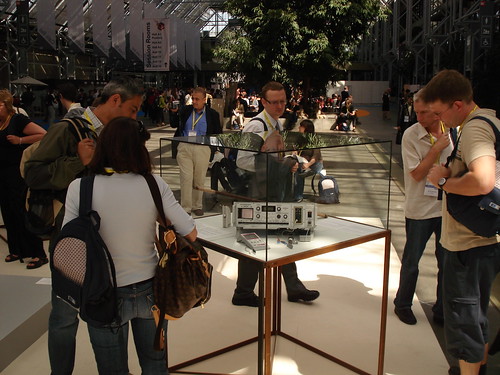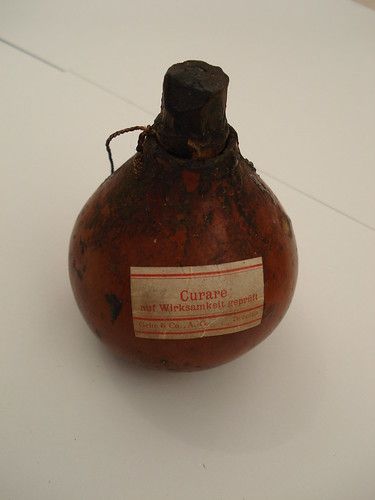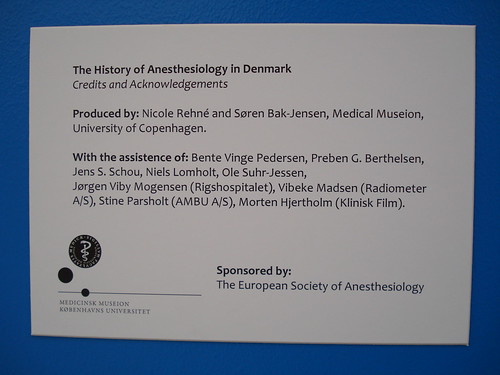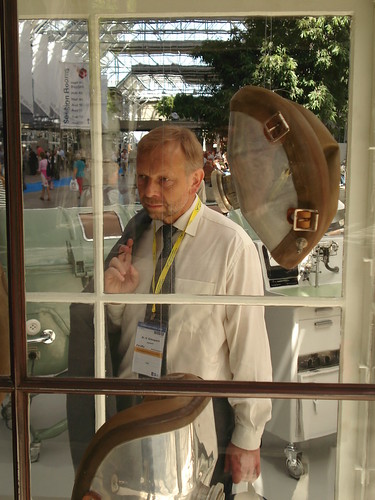A couple of months ago the Danish Society for Anaesthesiology and Intensive Medicine asked Medical Museion if we were interested in making a small exhibition about the history of Danish anaesthesiology and intensive care in connection with the fourth Annual Meeting of the European Society of Anaesthesiology (Euroanaesthesia 2008) in Copenhagen.
With 5000 potential exhibition visitors in mind, we said yes, of course! So during the last two months Søren Bak-Jensen and Nicole Rehné have worked hard planning the exhibition and setting it up. The European society has supported us with ~10.000 euros, and we have received valuable help from specialists and a few companies (see credits below).
And today it opened in the west end of the main hall of the Bella Center. An 80 sq.m. display area with a Dräger iron lung from 1952 as the iconic object of modern intensive care placed in the middle:

encircled by showcases that display a number of exquisite artefacts from our collections, including, for example, Ruben resuscitators and a curare flask from the turn of the last century. We have also borrowed some objects from medicotechnical companies Radiometer, AMBU and an evocative movie from Klinisk Film.
Here are some more pictures from first couple of hours when the meeting participants streamed into the huge congress building:





And finally the credits:

Special thanks to Dr. Hans Kirkegaard, Chairman of the Danish Society for Anaesthesiology and Intensive Medicine and a specialist on curare, who took the initative in the first place — here photographed while he is inspecting one of the showcases:

The exhibition closes on Tuesday.
No doubt, this kind of exhibitions is a great opportunity to foster contacts between the medical profession, the medicotechnical industry, medical historians and medical ethnographers. We’ll soon be back with more pictures and reflections on this particular kind of extra-mural medical historical object exhibitions.


